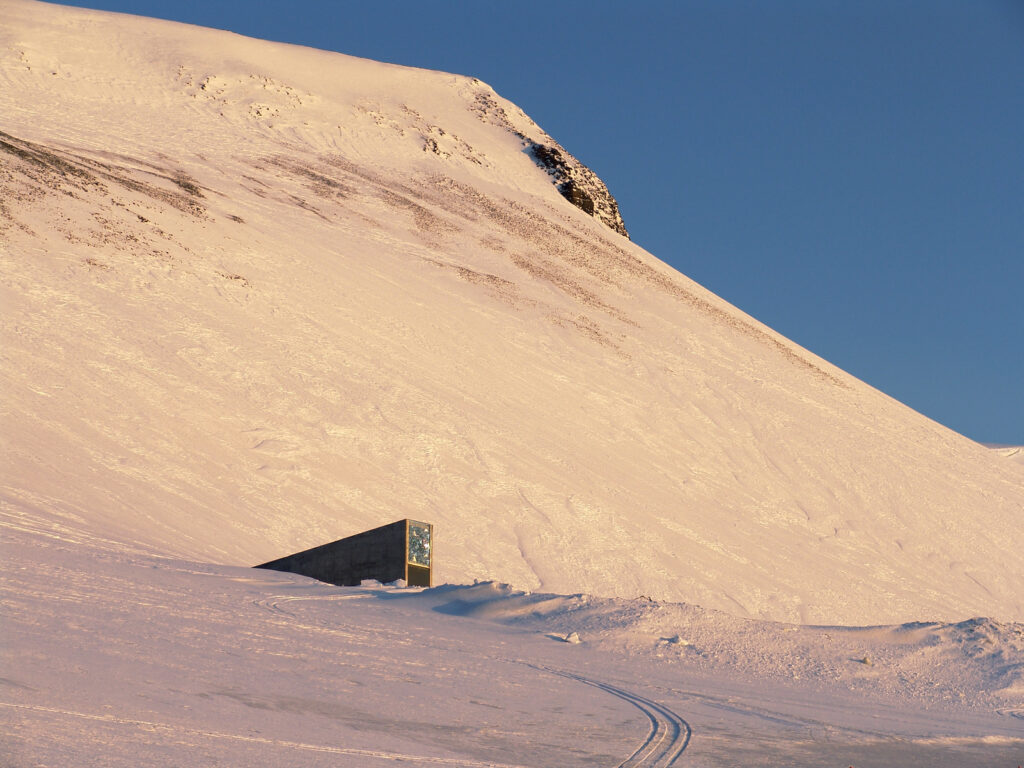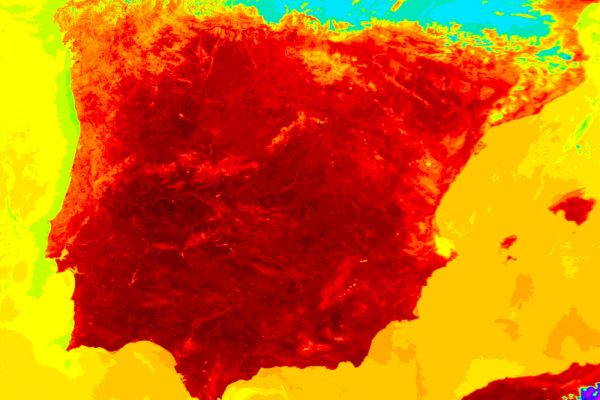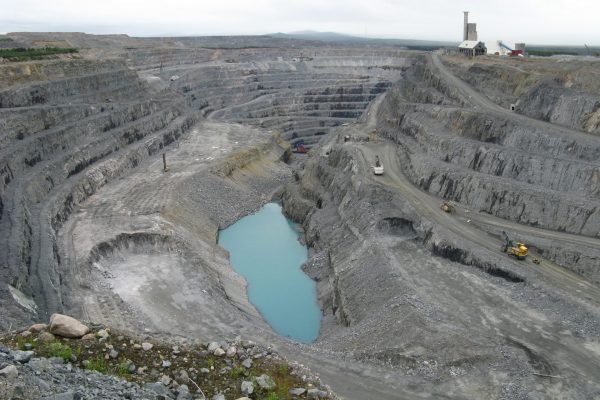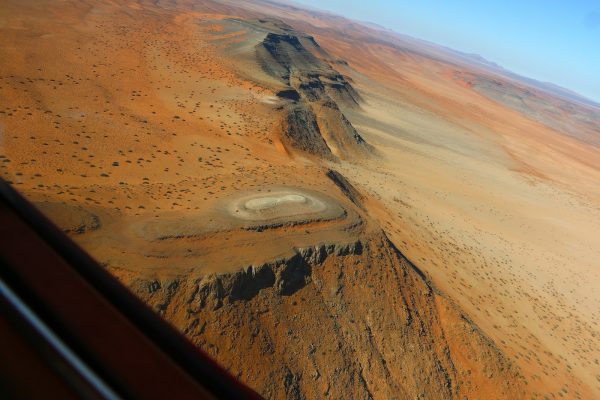Built in the permafrost, the ten-year-old Svalbard Global Seed Vault, which currently contains 850,000 food crop seed varieties, was supposed to take care of itself, to operate “without the help of humans.” Unfortunately, just last week the massive refrigerator in an abandoned coalmine made headlines for needing our help.
Widely known as the “doomsday vault” and the brainchild of conservationist Cary Fowler, it is supposed to safeguard the food supply in the event of regional or global catastrophe. “Even given worst-case scenarios for global warming, all three vault rooms will remain naturally frozen for up to two hundred years,” said Fowler. Although no seeds were destroyed in the flood, which took place last year—the water froze in the tunnel, well before reaching the vaults—the event challenges Fowler’s reassuring calculations. It is a reminder of the perils of underestimating the power of climate change.
Gene banks do important work, but they are not insurance policies for the apocalypse.
Properly accounting for climate change was always only one problem with the vault, though. Gene banks can do important work to preserve biodiversity and be safety backups that help the world run more smoothly through crisis. But they are not insurance policies for the apocalypse. Even thinking that might invite disaster.
• • •
Let’s start with genetics, the science of genes. In his book Seeds on Ice (2016), Fowler explains his rationale for the seed bank. “New varieties do not spring into existence de novo. They are comprised of traits—genes—assembled from previous, even ancient varieties and populations. . . . And those traits might well be ones that could protect the crop from catastrophic failure, or worse.” Preserving a great diversity of seeds can preserve some genetic diversity—and our ability to feed ourselves—in an adverse future.
Sadly, though, evolution could confound such good intentions. Organisms are what they are because of their genes and the effects of the environment. What a gene does depends on where it is, in what genome, cell, or environment. Biodiversity is a combination of all these potentials. Ecosystems are the result of both genes and environment influencing each other. The hope of preserving biodiversity by only freezing genes from the past is naive.
Consider what might happen when there is a conflict caused by mismatching old genes with new ecosystems.
William Rice at the University of California, Santa Cruz, collected only the sons of matings between fruit flies over the course of about a year. That is about 40 generations, or 1,000 years in human time. The sons were allowed to mate with females from a monoculture of a specific genetic profile that could not change.
In other words, the females’ genetics were frozen in time, insulated from evolution. The males’ were not. The males that produced the most sons contributed the most offspring to future generations, because only their sons were allowed to breed. Any mutation that improved the number of sons a male fly sired would be better represented in subsequent generations.
In that short period of time, males evolved seminal fluid that was toxic to the females, killing many. While it seems counterintuitive to harm the mother of your unborn sons, the mutations reduced a female’s ability to be fertilized by another male and also modified the female behavior to be less receptive to mating a second time with other males.
In nature, males with toxic semen would ultimately select females that were immune to it. This encapsulates the arms race between the sexes in non-monogamous species. But by allowing only one genome to run in the race by freezing the female genome at an ancient time, the females could not develop adaptations to compensate for the new male traits that harmed them.
Evolution works by rules we sometimes don’t anticipate. Moreover, genomes shape ecosystems and environments; the latter do not just select adapted genomes. The flies are warning us that we cannot just thaw out the past for a sustainable future.
Evolution works by rules we sometimes don’t anticipate. We cannot just thaw out the past for a sustainable future.
To be fair, that was not what the architects of the Global Seed Vault were trying to do. Indeed as Fowler describes in his book, the seed bank is less an effort to stave off an Armageddon than it is to preserve biodiversity: “With a duplicate sample of each distinct variety safeguarded in the Seed Vault, genebanks can be assured that the loss of a variety in their institution, or even the loss of the entire collection, will not mean the extinction of the variety or collection and its diversity.”
Seed banks are sort of like zoos for genes. Like zoos, they do not hold a representative biodiversity of the age for any species, but examples of the genetic diversity at the time. Some of the banked genes can be resuscitated by breeding them back into the genomes of existing crops, recycling important traits.
Fowler is right to worry about the loss of plant genetic diversity. Plants have been feeding us and our livestock for the last 10,000 years. In just the recent period from the 1960s to now, it has increased crop food availability from 2,360 to 2,884 kilocalories per day per person.
But our gain has been biodiversity’s loss. About 60 percent of plant-derived calories for human food come from only four crops—wheat, rice, potatoes, and corn—and 80 percent are from just eight more. What we eat is only a miniscule portion of the planet’s edible plants. And who grows these calories is also a tiny sliver of society, at least in the wealthy nations where farm size is growing. That, incidentally, leaves the majority of the world’s farmers—on small farms—to supply us with necessary nutrients.
For the large staple crops, a few nations dominate the world’s supply. They select the narrow genetic base that works best for them. Those big markets dictate to the breeding programs, which in turn respond to commercial signals rather than a public need to maintain agroecosystem diversity.
Declining agrobiodiversity in the world’s staple crops is not hypothetical, nor are the effects. The UN Food and Agriculture Organization says that nearly 10,000 wheat varieties were in use in China in 1949, but only 1,000 were left by the 1970s. Between the nineteenth and twentieth centuries, 95 percent of cabbage, 91 percent of corn, 94 percent of pea, and 81 percent of tomato varieties used in the United States were lost.
Breeders are depending on a gene in the frozen genome to confer the same trait in the new. That is possible, but as the fruit flies show us, that is not always what happens. Genomes are not rows of genes, as in the sense of a building made from bricks. A genome is a potential; an organism is a brick. The latter will function across a range of conditions and under those circumstances will continue to be recognized as a brick. Fall outside of a nominal range and the brick will fail.
All of the materials that went into the construction of the brick have individual properties and new properties that emerge in combination. These materials are like the genes of a genome, which, as a whole, describes how organisms remain functional despite encountering changes in their external environments and internal physiology.
Using the same materials in different compositions can recreate some of the same properties that are possessed by bricks. However, in a new context and combination of materials, the product may no longer clearly be a brick or function across the same range of stresses that we would expect a brick to tolerate.
The value of banks is that they are sources of traits that extend or modify the range of conditions under which a plant’s systems may remain nominal. These might make a plant less vulnerable to a pest or disease, or less needy of water. As important as these changes can be, though, mostly they are incremental and transitory. Fowler himself writes, “There is no single ‘best’ variety of any crop, at least not for long. There can’t be.” And the ravages of climate change are ushering in a “pre-rice, pre-wheat, pre-potato, pre-agriculture” climate for which no seed in the vault, no matter how old, would have been adapted.
Every innovation in crop genetics changes the environment in which crops are grown. Increase the ability of a plant to grow in drought, and next year there may be even less soil moisture. Eventually no amount of genome change will suffice to overcome the effects of desiccation and still make the plant we recognize, or that we can eat. To hope otherwise is to distract from the target: stop or at least minimize climate change.
• • •
There are innumerable roads to apocalypse, many of which can take us there on their own. The precipitous and irreversible loss of biodiversity is one of them, and we are well on our way.
To be clear, when we talk about biodiversity we are not doing a census. The critical issue is the maintenance of ecosystems with particular characteristics determined by biodiversity. This is where the idea of seed banks falls short.
Antibiotic-resistant bacteria are an effect of the loss of biodiversity.
Take the example of antibiotics. Antibiotic-resistant bacteria are a manifestation of biodiversity loss. Prior to human (mis)use of antibiotics, there were antibiotic resistant bacteria. Even so, the great diversity of bacteria, even within single species, swamped out the resistant ones so that for periods of time every antibiotic was reliably effective.
Genes that make bacteria resistant to antibiotics have become so common, and the number of bacteria with resistance to most or all antibiotics is growing so rapidly, that soon no antibiotic will be able to be used with confidence that it will work. That is a loss of biodiversity: the loss of environments free of bacteria resistant to antibiotics.
Extinction of susceptible bacteria is not needed for antibiotics to fail. Resistance could be a trait held by a tiny minority of bacteria and antibiotics would still fail, if a few of those bacteria were in every environment we share. Antibiotics are so powerful at culling susceptible bacteria that they nearly guarantee the success of the resistant, whenever and wherever antibiotics are used.
Thus, putting antibiotic-susceptible bacteria in the freezer would never be enough to restore the usefulness of antibiotics in the future. The characteristic of an ecosystem where antibiotics can be used to treat infections is nearly now lost to planet Earth, even though the number of antibiotic-susceptible bacteria is astronomical.
• • •
An insurance policy in the form of a seed vault underestimates the complexity of the interactions between genetics and environment. It also underestimates (or is agnostic about) the impacts of agricultural technology. Agriculture will not be responsible for the apocalypse, but it is so far indispensable for it.
Through agriculture humanity has been narrowing the genetic diversity of our food base, while simultaneously replacing complex ecosystems with pesticide-managed, nitrogen-fueled monocultures. These effects on biodiversity are made possible in part by breeder-driven, chemistry-assisted solutions to farmers’ needs. Those needs are in large part the outcome of ideological and economic forces we have created and which determine how a farm can remain financially viable.
Agriculture is how a culture responds to the need for food and delivers it according to certain economic constraints using available technology. Resistance to some products of technology is often cast as a resistance to change. But this belies the origin of most technologies as means to avoid change by ameliorating the effects of our deeply entrenched habits that have created the problems in the first place. Frequently new technologies simply allow economic and political actors to avoid tough but true solutions to society’s problems.
In his novel The Windup Girl (2009), Paolo Bacigalupi describes a future in which wealth is measured in calories and these are controlled by calorie merchants. The merchants own the major sources of germplasm and either sell these to farmers or license the intellectual property for local production. To maintain global hegemony, the merchants genetically engineer waves of pests and pathogens to render obsolete the crop varieties that are no longer under their control, forcing nations to return to them for germplasm.
We have narrowed the genetic diversity of our food base and replaced complex ecosystems with pesticide-managed, nitrogen-fueled monocultures.
A conspiracy of mega-corporations colluding with trade-hungry nations is one way to achieve such a future, but it is not the only way. Monocultures are enough. Crop monocultures select for specialist predators and pests. So do simplistic pest control strategies, such as overreliance on just one or a few insecticides or herbicides, or substitution of chemical pest control for a range of control technologies.
Monoculture agriculture, supported by chemical inputs that benefit from the strongest intellectual property rights instruments ever used, concentrate food supply control into the hands of a small number of companies. Already only three agrochemical companies control over 50 percent of the global proprietary seed market; ten companies control 73 percent. In the United States, three companies hold 85 percent and 70 percent of the patents on corn and other crops, respectively.
• • •
Shortly after the near-failure of the genetic monoculture U.S. corn crop in the early 1970s from the Southern Corn Leaf Blight, the National Academy of Sciences noted in its annual report:
The resources of all countries should be regarded as part of an interdependent habitat rather than merely as possible sources of supply; and our national policy should therefore conform to the principles of conduct adopted by the community of nations in a common effort to protect the human habitat and its resources.
Principles such as those are reflected in the idea of an international seed vault. It has “existence value,” and while “diversity can be conserved through diverse means,” as Fowler says, some means displace others not because they are better, but because they are easier to sell. A technological solution will not be enough to preserve diversity. Liberating the capacity to make food from overly narrow socioeconomic ideologies that limit what farmers grow, how they grow it, and what consumers are offered is an alternative, albeit difficult, political choice. It can create a fork in the road leading away from the apocalypse.
Changing how we think about options for an agriculture of the future was part of the mandate for the World Bank’s International Assessment of Agricultural Knowledge, Science and Technology for Development (also known as the World Agriculture Report). It recommended solid solutions for transitioning environment- and farm-degrading agricultural practices to sustainable ones. In theory, all technologies can contribute to this, but some are less collaborative.
A move to more agroecological agriculture in both industrialized and developing countries was a key recommendation. The path to this varies depending on what kind of agriculture currently dominates in a region or country. For industrialized countries, it will require a fundamental rethink about how we set priorities for public research, account for true costs of production, support domestic farmers without penalizing farmers in poor countries, and how we create intellectual property rights and other instruments to incentivize entrepreneurship.
Seed banks can certainly play a role in this sea change by contributing to the preservation of genetic diversity. But we cannot rely on genes from the past to breed crops for a future environment lacking soils in which no current plant could ever grow.
Genetic diversity should be maintained by using it, not by storing it under ice.
In the meantime a key strategy for the future is in situ conservation, where genetic diversity is maintained by using it rather than storing representations of it under ice.
In situ conservation requires land. It requires workers. It may not be optimal for financial returns and this becomes even more problematic the smaller the farm. The inverse of this is what makes monocultures of staple crops successful under prevailing socioeconomic ideologies.
We could find this land through a combination of new technology and social change. A first step will be to challenge the philosophy of the “production gap.” As described by Fowler, “Society will need at least a 50 percent increase in food production by the middle of this century to keep pace with population growth and development.” That framing sits well with the philosophy of doomsday vaults, in which technology is positioned as a way to address a technologically framed problem. When the problem is capacity to produce, solutions come from technologies that preserve or enhance production.
However, the hypothetical future gap between what agriculture can produce and what humanity needs will never be filled by production. Unless we challenge the production gap philosophy, a production gap will always be possible. Fortunately, we have options.
Reducing waste, rather than preserving certain thresholds of production, is among the most promising. Wealthy countries waste enormous quantities of food. In Europe food waste is estimated to be 173 kilograms per person per year, or about 20 percent of the total amount of food; the USDA estimates that 30–40 percent of food is thrown away in the United States. Diverting waste and fish discards to feed animals would release the equivalent crops to feed 3 billion people and support a 50 percent increase in aquaculture. Simultaneously, reducing food waste would significantly reduce greenhouse gas emissions generated in production and packaging, as well as landfill methane emissions, and significantly decrease freshwater use. And it would free up large parcels of land for in situ conservation.
Sacrifices will have to be made by those who can afford to make them. Eliminating food waste is the easiest of them. The bigger challenge is to enjoy satisfying our needs rather than our wants.
The science of agroecology shows sufficient promise to have been backed by the World Agriculture Report experts. It could deliver if we invest in it amounts of money and time that other biotechnologies have enjoyed for the last forty or so years. At least it is more likely to deliver than the dominant industrial biotechnologies currently promoted. The combination of relief to the demands on agroecosystems gained by eliminating waste, and the rehabilitation to the world’s soil, aquifers, and atmosphere that agroecological practices can bring, could mean that we can have our habit and eat it too. Or at least have enough to fill a picnic basket for our trip down a different road to the apocalypse.








